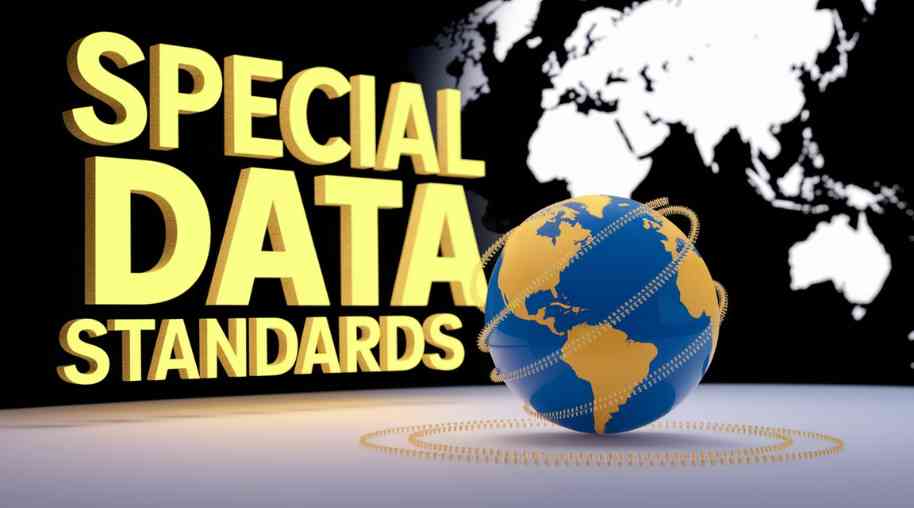SDDS Full Form-Special Data Dissemination Standards
by Shashi Gaherwar
0 1005
Special Data Dissemination Standards: Ensuring Transparency in Global Financial Reporting
Introduction
In today's interconnected global economy, financial transparency and accurate data dissemination are critical for maintaining market stability and investor confidence. The Special Data Dissemination Standards (SDDS) were introduced by the International Monetary Fund (IMF) to promote better statistical reporting among member countries. These standards help governments, policymakers, and investors access reliable economic data, ensuring informed decision-making in financial markets.

Understanding Special Data Dissemination Standards (SDDS)
The SDDS framework was established by the IMF in 1996 to enhance timely and accurate economic data reporting. Countries that adopt SDDS commit to following specific guidelines on how economic and financial data should be collected, compiled, and disclosed to the public. This standardization helps improve cross-country data comparability and ensures transparency in global financial markets.
Objectives of SDDS
1. Enhancing Economic Transparency – Ensuring that essential financial and economic data is available to the public and investors.
2. Improving Data Quality – Setting standards for data reliability, consistency, and integrity.
3. Facilitating Market Stability – Providing investors with accurate information to reduce uncertainty and financial risks.
4. Encouraging Economic Policy Discipline – Helping governments implement sound economic policies based on reliable data.
Key Components of SDDS
To comply with SDDS requirements, countries must adhere to the following data categories and principles:
1. Coverage, Periodicity, and Timeliness
• Countries must publish key economic and financial data periodically (daily, monthly, or quarterly) and ensure its timely dissemination to the public.
• Data categories include national accounts, fiscal indicators, financial sector data, and external sector statistics.
2. Access by the Public
• Countries must provide broad and open access to their economic and financial data.
• Governments typically use official websites or dedicated portals to ensure free and easy access.
3. Integrity and Quality of Data
• Transparency is crucial in the data production process, ensuring users can verify sources and methodologies.
• Independent audits and metadata disclosures help maintain data credibility.
4. Advance Release Calendar (ARC)
• Countries adopting SDDS must publish an advance release calendar indicating when key economic data will be available.
• This enhances predictability for investors and policymakers.
Benefits of SDDS Compliance
Countries that adhere to SDDS guidelines enjoy several advantages, including:
1. Increased Investor Confidence
• Reliable and standardized data enables investors to make informed decisions, attracting foreign direct investment (FDI) and capital inflows.
2. Strengthened Financial Markets
• Consistent reporting standards reduce market volatility by preventing sudden economic shocks.
• Transparent data enhances risk assessment capabilities in banking and financial sectors.
3. Enhanced Economic Policy Formulation
• Policymakers rely on accurate data to craft effective monetary and fiscal policies.
• Helps in long-term economic planning and development.
4. Improved International Credibility
• Countries that follow SDDS are perceived as more trustworthy and stable in the global financial community.
• Facilitates better relations with international organizations like the IMF and World Bank.
Challenges in Implementing SDDS
While SDDS offers numerous benefits, some challenges exist in its implementation:
1. Resource Constraints
• Many developing nations lack the technological infrastructure and expertise to maintain high-quality statistical reporting.
2. Data Confidentiality Issues
• Some governments may be hesitant to disclose economic data due to political and security concerns.
3. Maintaining Data Accuracy
• Ensuring that data is accurate, free from manipulation, and regularly updated requires strict oversight.
4. Compliance Costs
• Establishing and maintaining SDDS-compliant reporting systems can be financially burdensome for some nations.
SDDS vs. General Data Dissemination System (GDDS)
The IMF has also introduced the General Data Dissemination System (GDDS) as a less stringent alternative to SDDS. Key differences include:
• GDDS is more flexible, allowing developing countries to improve their statistical capacity over time.
• SDDS is mandatory for IMF member nations seeking access to international capital markets.
• GDDS focuses on building statistical capacity, while SDDS emphasizes high-frequency and timely data dissemination.
Countries Adopting SDDS
More than 90 countries, including the United States, United Kingdom, India, China, and Brazil, have adopted SDDS compliance. These nations benefit from enhanced financial stability and global market integration.
Future of SDDS
As financial markets continue to evolve, SDDS will play a crucial role in:
• Incorporating digital technologies to improve data collection and dissemination.
• Expanding coverage to include emerging financial trends such as cryptocurrencies and fintech.
• Enhancing cross-border data-sharing mechanisms to prevent economic crises.
• The Special Data Dissemination Standards (SDDS) are vital for maintaining financial transparency and stability in the global economy. By ensuring accurate and timely data dissemination, SDDS helps countries build stronger financial markets, attract investments, and formulate effective policies. While challenges remain, ongoing improvements in technology and governance will further enhance the efficiency and reliability of SDDS-compliant economic reporting.

Share:








Comments
Waiting for your comments